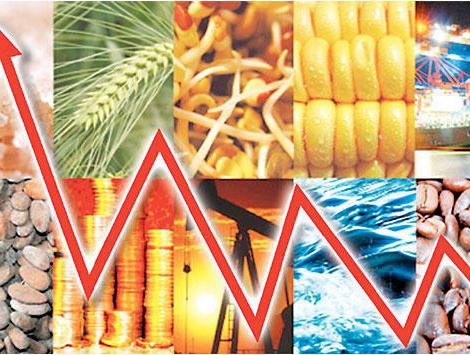The market is a complex and diverse economic phenomenon. Many scientists approached its systematization and created many classifications, none of which is comprehensive. The basic classifications of markets allow us to see the depth and complexity of this phenomenon.

Market concept
In economics, the market refers to the system of relations between the producer and the buyer through supply and demand. This is a special management system, which is determined by the system of diverse relations of market entities. Each subject acts simultaneously in at least two forms: he is both a seller and a buyer. Relations between entities occur in various fields and at different levels, so the classification of markets is a complex issue with several answers.
The concept of the market is associated with freedom and self-regulation, and the peculiarity of this phenomenon is that it must take shape under the influence of many factors, it cannot be created in an orderly manner. The main difference between the market and other forms of management is the freedom of its participants. The second is the availability of property. It is she who is the main incentive for a manufacturer who is interested in creating high-quality goods at reasonable prices. Also, the market is characterized by high awareness of the participants about the situation and high mobility of resources. The market must respond quickly to changes in supply and demand, so that the producer manages to get the maximum profit, and the consumer satisfies his needs.

Market structure
Any market consists of manufacturers and consumers - these are two main elements of the market structure. Features market structure due to the fact that an unlimited number of participants can work on it. Only the presence of competition triggers market mechanisms. Competition not only contributes to the regulation of production and pricing, but also creates scattered economic power that provides fair conditions for all participants to do business. However, the classification of markets can be caused not only by the number of participants, but also by such signs as control over the market price, the nature of the products sold, the presence or absence of barriers to entry into the market and the existence of non-price competition.
The degree of price control is one of the most important indicators determining the structure of the market. The more economic power concentrated in one hand, the less competitive the market.
Traditionally, given the above indicators, researchers distinguish 4 types of market structure.
- Monopoly. In this case, most of the power over the market is concentrated in the hands of one player. He can dictate his conditions to the market, and this adversely affects the implementation of market principles. A lot of buyers and few sellers are usually represented in such a market, and there are barriers to entry of new producers into the market.
- Oligopoly is a form of imperfect competition when power is concentrated in the hands of several players. When entering such a market, manufacturers have high barriers, the market is characterized by low information openness and a large number of buyers.
- Monopolistic competition - a borderline kind of structure between imperfect and perfect competition.Such markets are characterized by a large number of manufacturers and buyers, products from different manufacturers have slightly pronounced differences, information in such markets is carefully protected.
- Perfect competition - a structure in which there are many manufacturers and many consumers, it is an ideal self-regulatory structure with unlimited competition and a large amount of market information.

Market functions
The complexity of the structure and the diversity of market participants with their goals and objectives leads to the fact that the functions, classification of markets can be determined in different ways, depending on the situation. However, traditionally in macroeconomics we are talking about seven basic functions of the market, these include:
- Regulatory. The most important of all, it is to strike a balance between supply and demand. Regulation allows manufacturers to find empty niches and reduce competition in oversaturated markets.
- Informational. The market provides information to producers and consumers about the product, market conditions, prices, benefits.
- Sanitizing. The market is a tool for removing weak, uncompetitive companies from the market, which contributes to the growth and recovery of the economy.
- Distribution. The market ensures the movement of goods in those areas where demand is higher, eliminating shortages and overstock.
- Intermediary. The market ensures that the consumer finds the goods and the manufacturer.
- Pricing. The market seeks a balance between supply and consumer purchasing power, forming an adequate price.
- Stimulating. The market motivates manufacturers to use scientific and technological innovations, to search for more economical and safe production.

Market principles
Any market in its full functioning is based on the following principles:
- Freedom. The main principle is the free choice of the form, scope and form of conducting economic activity. Anything that does not contradict the law may become a subject of entrepreneurial activity.
- Consumer leadership. The market operates to meet the needs of the consumer, and the producer’s profit is secondary.
- Competition. In the market, nothing should limit the free competition of producers of goods.
- Equality of owners of any form of ownership.
- Free pricing. Price should be based on market mechanisms, and not under the influence of regulators.
- A responsibility. All entities must bear economic responsibility for their actions.
- Universality. The market should be accessible to all.

Types of markets
The variety of functions and goals of the markets creates complexity in their division into types. The main signs of the classification of markets are as follows: geography, object of transactions, nature of sales, level of saturation, degree of maturity, industry and assortment of goods, and others. The concept of the market, the classification of markets come from a variety of grounds, so you can find many of their varieties.
The most common markets are:
- commodity;
- services;
- finance;
- real estate;
- information;
- labor.
There is also a private classification of markets, which allows you to highlight the equilibrium, excess and deficit; car, clothing, food market, etc .; sellers and buyers; government agencies; wholesale and retail; national and global.

Commodity markets: types and specifics
The redistribution and movement of goods and services occurs in product markets that are closest to the consumer. Classification of markets for goods and services is difficult due to the huge variety of transaction items. Traditionally, the services market is divided into the following segments: education, healthcare, insurance, transport, housing, domestic and utilities, culture and art. The peculiarity of this market is that part of the services for the consumer is free and funded by the state.There are usually few intermediaries in this market; the service provider communicates directly with the consumer.
Commodity markets are divided into: markets for food products, consumer goods, the commodity market. They can also be classified by location in domestic, regional and global. There are many intermediaries, so there are wholesale and retail markets.
Financial market structure
The turnover of funds occurs in a special market - the financial one.
The classification of financial markets includes two global varieties such as:
- stock market, or securities market;
- credit market.
In turn, the latter can be divided into:
- Money on which "short money" is sold for a period of up to 1 year.
- Capital, it is moving "long" money for up to several decades.
- Currency. Currency exchange, the purchase of money from other countries is carried out in this special market.
- Urgent. Provides the conclusion of contracts for certain periods.

Securities Market: Types and Functions
Selling various securities to investors requires a special market, as the financial security of participants is especially important here. The classification of the securities market is usually based on the varieties of the subject of transactions. Traditionally, markets for bonds, stocks, and financial instruments are distinguished. Also, the financial market is divided into primary and secondary, depending on how many times the paper enters the market.
Features of the labor market
The special market in which the movement of labor resources is called labor market. Typically, the classification of the labor market is based on the territorial principle, in which case external and internal are distinguished. Also, the labor market can be segmented by demographic characteristics of personnel; in this case, markets for youth, women, the elderly, and people with disabilities are distinguished. It is also possible to highlight professional labor markets: production, education, and management.








